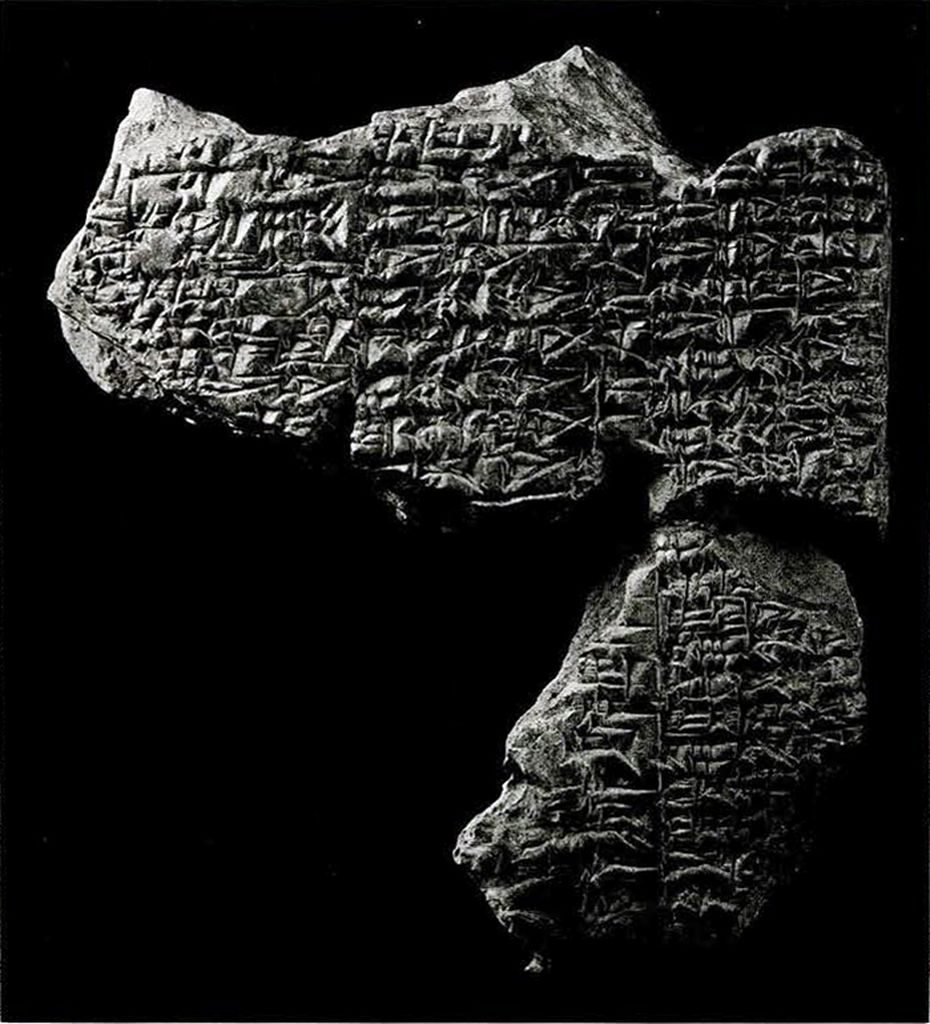THE DYNASTY OF AGADE.
At a few months interval, our material for reconstructing the early Sumerian chronology has been increased by the recovery of a small fragment. It belongs to the tablet published in the last number of the MUSEUM JOURNAL. It is indeed the lower part of cols. 7 and 8, which gives us back for the first time the complete dynasty of Agade.
The old Sargon, the founder of Agade is a great figure of the past. His empire extended probably to the Mediterranean Sea. We can now establish the order of his descendants and the lengths of their reigns. It becomes evident that king Naram-Sin commonly called son of Sargon, was his son only in a broad sense, being in reality his great grandson.
The dynasty of Agade reads as follows.
Sargon reigned . . . . . . . . . . . . . . . . . . . . . . . . . . . . 55 years
Rimuš son of Sargon reigned . . . . . . . . . . . . . . . . 15 years
Maništešu son of Rimuš reigned . . . . . . . . . . . . . . 7 years
Naram Sin son of Maništešu reigned . . . . . . . . . . 56 years
Sargani-šarri son of Naram-Sin reigned . . . . . . . 25 years
Sargon was king of Kiš before he founded Agade. He calls himself a devotee (ur) of the god Zamama, the patron god of Kiš, perhaps his personal god. In the same manner, before him, king Lugalzaggisi, born in the city of Umma, calls on his patron goddess Nidaba, even when he is the all powerful King of Uruk. The title of libator may be an actual expression of the rank and function of Sargon in the temple of Zamama. It has a strange savour of the old Sargon legend, of the boy brought up by Aggi the libator, the adopted child growing up in the precincts of the temple and rising to the dignity of founder of a great empire. To the last days of Nineveh and Babylon people never tired of reciting that wonderful story.

Soon after Sargani-šarri, a fragment (No. 3) published formerly by Poebel, has a computation of its own, a total of 157 years for the 5 kings, which is correct by one year compared with the detail of the new fragment. But most remarkably it attributes only 24 years to Sargani-šarri, instead of the 25 of the new fragment. On the main fact they agree. The only doubtful point, in the poor condition of our damaged fragment is the number of years 6 or 7 of King Maništešu. But the number 7 seems to be required by the total of Poebel’s fragment. Moreover we have the means of controlling the correctness of the figures. In the well known tablet published by Scheil we read that 12 kings of Agade reigned 197 years. The last kings of Agade after Sargani-šarri, reigned together 39 years, which added to our 158 years, amounts exactly to 197.
Sargani-šarri according to the famous inscription on the door socket from the temple of Nippur, now preserved in the Museum, was the son not of Naram-Sin but of Dati-Enlil. How this is to be reconciled with the statement on the new fragment, is not clear.
More trouble awaits us with the immediate successors of Sargani-šarri. Scheil’s and Poebel’s documents make good that 4 kings reigned together 3 years. They agree more or less about their names and order: Igigi, I-mi-ilu-(?), Nanium or Na-nu-um, and Ilulu or Elulu. Poebel’s fragment insists on the fact that they were kings. The new fragment breaks off before the end of the list, and has variants of its own. It reads:
>Ma-nu-um [šarru]
Ma-nu-um [la … ]
Ir-di -[ ]
Na-nu-[um ]
I – [ ]
Was the scribe uncertain about the reading of the names, or did he feel authorized to translate them? And what are we going to do with the first lines : manum . . , written in good Semitic language, for which we find a Sumerian translation: a-ba-ám, in Scheil’s tablet? Are they a short sentence, expressing that in the confusion which followed Sargani-šarri’s death, nobody knew who was the legitimate king, or are they proper names, to the effect that Manum was king, but not counted as king, or did not reign at all? In fact between Sargani-šarri and Dudu and Sugarkib, the last 2 kings of Agade, we want not 4 but 5 names to make good the total of 12 kings. It is too early to give a definite answer to the question, which after all has not great importance.
Rest of col. 8, gives the end of the names of some of the Guti kings No. 8 to 11.
L. L.

